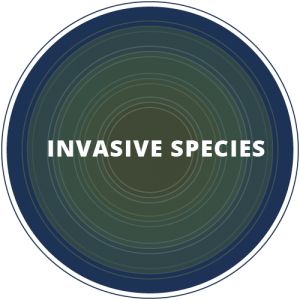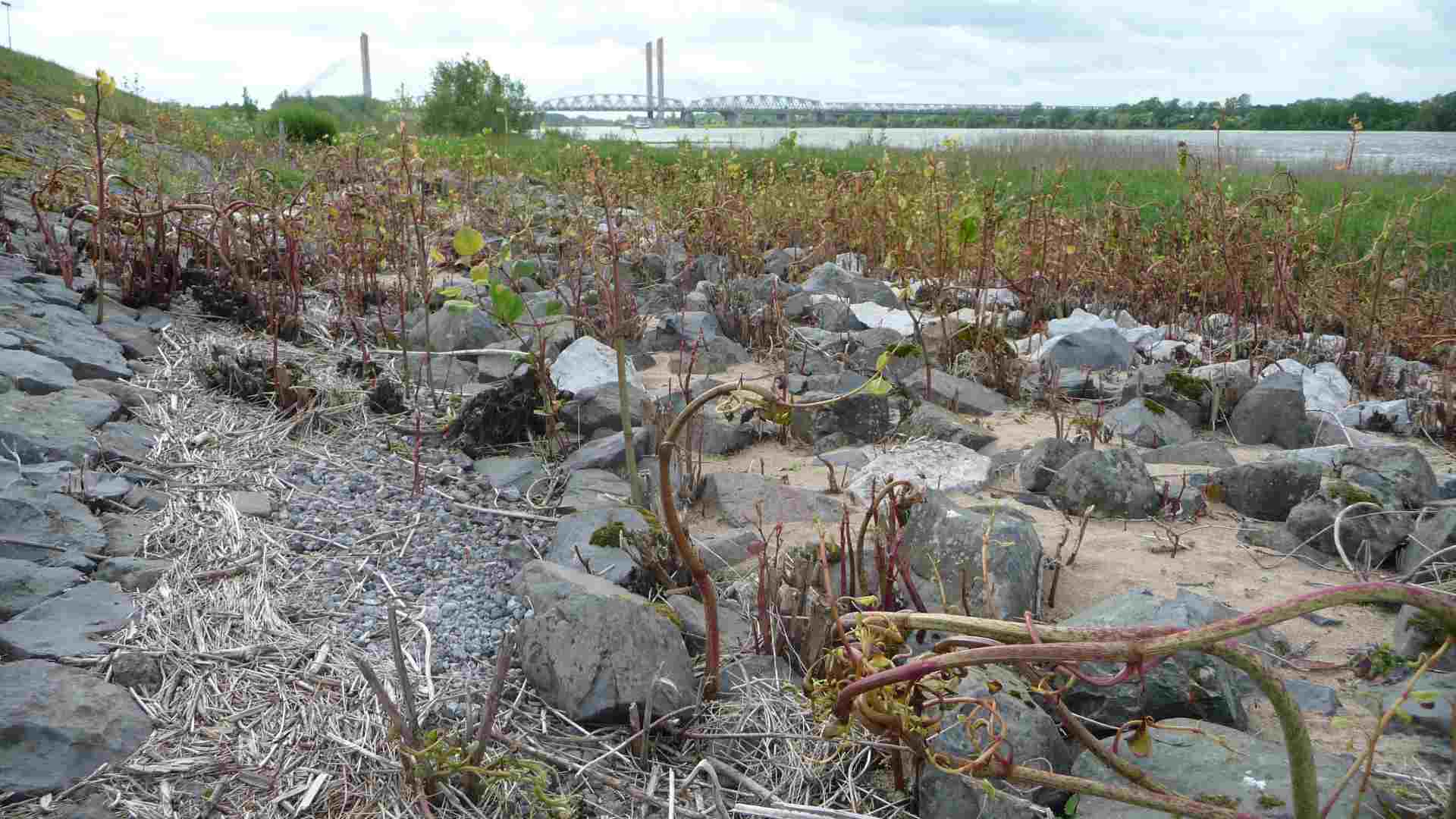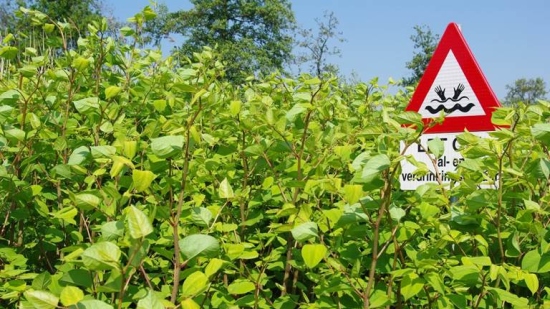Invasive species

Invasive species: Asian Knotweed
Invasive species, and Asian knotweed in particular, are an increasing problem in natural and urban green spaces, parks and gardens. Asian knotweed is very hard to control, and increasingly displaces native species. It is also detrimental for infrastructure, such as road surfaces, dykes, foundations and sewage systems.
Practical studies and advice on invasive species
Probos has extensive experience studying the effects of invasive species and control methods. For example, we have carried out studies on red oak (Quercus rubra), black cherry (Prunus serotina) and northern highbush blueberry (Vaccinium corymbosum). In 2011 we published a practical guide on how to control invasive plant species (in Dutch).


Knotweed control
Our most extensive study dealt with knotweed control. Between 2013 and 2016, Probos carried out a practical investigation, testing several methods for controlling Asian knotweed, for example intensive mowing, grazing, covering and herbicide treatment. In 2018 we started a number of field tests of other methods, such as treatment with hot water or steam.
Probos developed a decision tree; helping landowners and managers select the most suitable method for specific knotweed locations. It is currently working on a national knotweed control protocol.
We set up and maintain a Dutch website on controlling Asian knotweed, www.bestrijdingduizendknoop.nl. We also host the website of the European Knotweed Control Network www.knotweedcontrolnetwork.eu. Probos is also looking to share its practical experience in control of knotweed and other invasive species abroad and is open to join cross-border projects.

